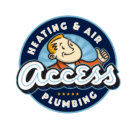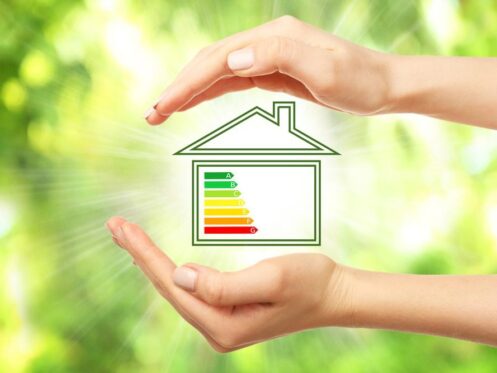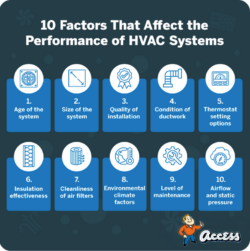Thinking about upgrading your HVAC system? Energy efficiency ratings are a smart place to start—but only if you know what they really mean for your home and your wallet.
If you’re a homeowner in the Boise area thinking about upgrading your heating or cooling system, understanding energy efficiency ratings is a great place to start. These ratings tell you how effectively a system turns energy into warm or cool air for your home — which directly impacts your comfort, utility bills, and long-term savings. Whether you’re replacing an aging furnace or exploring a new air conditioner before summer hits, knowing how to read efficiency ratings can help you make a smarter investment.
There are several types of HVAC efficiency ratings, but the most common (and important) are HSPF, SEER, and AFUE. Here’s a simple breakdown of what they mean and why they matter for your home in the Treasure Valley.
BTUs and energy efficiency ratings
British Thermal Units (BTUs) are the standard way to measure heat energy. One BTU is the amount of energy needed to raise the temperature of one pound of water by one degree Fahrenheit. When looking at energy efficiency ratings, BTUs help you understand how much heating or cooling a system delivers in relation to the energy it uses — the more output you get per BTU, the more efficient the system is.
Heating Seasonal Performance Factor (HSPF)
HSPF, or Heating Seasonal Performance Factor, measures how efficiently a heat pump provides warmth throughout the heating season. It’s calculated by dividing the total BTUs of heat the system produces by the total electricity it uses in watt-hours. For example, if a unit delivers 60,000 BTUs and uses 6,000 watt-hours, its HSPF rating would be 10. As of 2023, the minimum required HSPF for new heat pumps is 8.8. The higher the HSPF, the more efficient—and cost-effective—the system is to run.
Seasonal Energy Efficiency Ratio (SEER)
SEER, or Seasonal Energy Efficiency Ratio, is the go-to rating for measuring how efficiently an air conditioner cools your home. It’s essentially the cooling version of HSPF. SEER is calculated by dividing the total BTUs of cooling a unit produces over a season by the amount of electricity it uses. For instance, if your A/C puts out 24,000 BTUs and uses 1,500 watt-hours, its SEER rating would be 16. As of 2023, all new systems must have a SEER of at least 14. Just like HSPF, the higher the SEER, the more efficient the unit—and the more you’ll save on energy costs.
Annual Fuel Utilization Efficiency (AFUE)
AFUE, or Annual Fuel Utilization Efficiency, measures how effectively your furnace converts fuel into usable heat for your home. The Department of Energy requires this rating to be clearly labeled on all new furnaces sold in the U.S.
For example, if your gas furnace burns 10,000 BTUs of fuel and produces 9,500 BTUs of heat, its AFUE would be 95%. That means 95% of the fuel is being used to heat your home, while only 5% is lost. High-efficiency furnaces typically have AFUE ratings between 90% and 98.5%, making them a smart choice for both comfort and energy savings.
Factors that influence HVAC efficiency ratings
When looking at any heating or cooling efficiency rating, it’s important to remember that real-world performance depends on more than just the number on the label. A few key factors can make a big difference in how well your system runs day to day. By understanding what affects efficiency, you’ll be better equipped to get the most comfort and value out of your investment.
System age
Very old systems were not always built to be energy efficient. As components age, they don’t run as smoothly, consuming more energy. Modern engineering has made tremendous progress in improving capabilities to save energy while improving performance.
System size
A correctly sized system that matches the square footage of your home will be the most energy efficient. If you buy a system that is too small, it will have to work overtime to keep your home comfortable, using more energy. An oversized system will blast your home with warm or cool air, prompting it to shut down. When the temperature inside rises or falls, your thermostat will kick it on again. The result is short cycling that wears out the components and uses more energy than necessary.
Installation quality
An experienced HVAC professional will place your equipment in the right location. An A/C system should be out of the sun and have plenty of air circulation. Understanding manufacturer specifications is important.
Ductwork condition
You want to make sure your ducts are not leaking air. They also should be clean, so that air moves through them efficiently. You can further improve the efficiency of your system by insulating your ductwork.
Thermostat setting
Making sure your thermostat supports an efficient HVAC system is a matter of quality, location and its settings. You want a thermostat with an accurate sensor, ideally one that you can program and that has features which save energy, like monitoring your system and giving you control by location in your home. It should be centrally located for the most accurate readings. Be sure to set it within a reasonable temperature range. Keeping your home very warm in the winter and exceptionally cool in summer uses more energy.
Insulation levels
A well-insulated home keeps the cool air inside during summer and warm air inside during the winter. In addition to insulation in attics, walls, ceilings and floors, be sure to add weather stripping around doors and windows and seal all cracks.
Air filter cleanliness
A clogged air filter makes your system work harder. New filters are inexpensive and easy to switch out. Changing them every three months is a good idea. Then your high-efficiency rated HVAC will enjoy peak performance.
Climate conditions
The HVAC efficiency rating of your system varies by climate. In northern regions, you need a higher heating rating. In the south, you want a higher cooling efficiency rating.
Maintenance
Invest in performing regular maintenance on your unit. It is good advice to have your system checked every fall and spring to make sure it is ready for a cold winter and a hot summer. The energy rating system helps you buy an efficient HVAC unit, but maintenance keeps it running efficiently after installation.
Static air pressure
When there is resistance to air flowing through your system, usually caused by a clogged filter, dirty air ducts or blocked vents, your system works harder to push out air. That lowers its efficiency, no matter what its HVAC efficiency rating is.
What is a good A/C efficiency rating?
How are HVAC energy efficiency ratings calculated?
Accurately measuring HVAC efficiency depends on understanding how each HVAC efficiency rating is calculated. Here is a summary:
- HSPF = Total BTUs of heat output over a season ÷ Total electricity used, in watt-hours
- SEER = Total BTUs of cooling output over a season ÷ Total electricity used, in watt-hours
- AFUE = (BTUs of heat output ÷ BTUs of fuel input) × 100
💡 Energy Efficiency Myths That Are Burning Through Your Wallet
Energy efficiency labels and ratings are everywhere—but don’t let the numbers fool you. There’s a lot more going on behind the scenes of your HVAC system, and if you fall for these common myths, you could be losing comfort and money.
Let’s bust through the top misconceptions we hear all the time.
Myth #1: A high SEER rating guarantees lower energy bills
Busted: A SEER rating is like a car’s MPG—it’s tested in perfect conditions. But your house? Not a lab. Poor ductwork, sloppy installation, or even weak attic insulation can wipe out the gains from a high-efficiency system.
The truth: A great system installed wrong is just an expensive piece of equipment. Real efficiency comes from the whole setup working right—system, house, and install.
Myth #2: The bigger the system, the better the comfort
Busted: Oversized systems are like putting a jet engine on a go-kart—overkill. They cool your house too fast, shut off, then turn right back on. It’s called short cycling, and it’s the fast track to high bills, uneven temperatures, and early system failure.
The truth: Bigger isn’t better. The right size is better.
Myth #3: High-efficiency systems are a pain to maintain
Busted: Modern high-efficiency systems are actually built with reliability in mind. They’re smarter, smoother, and often easier to maintain than older clunky models.
The truth: With basic upkeep from a professional, these systems hum along with fewer issues—and can even notify you when they need service. High performance doesn’t have to mean high hassle.
Myth #4: If your system isn’t running much, you’re saving energy
Busted: Older systems tend to blast at full power when they run, so even short bursts use a ton of electricity. Today’s variable-speed systems run low and slow—like a fuel-efficient car on cruise control.
The truth: Efficiency isn’t about how long your system runs—it’s about how smart it runs.
Myth #5: You can “efficiency hack” your system by upgrading just one part
Busted: Swapping out your furnace or A/C without looking at the whole picture is like replacing your shoes but ignoring the giant hole in your sock.
The truth: True efficiency is a team effort—equipment, ductwork, insulation, thermostat, even window seals. If one part’s off, the system works harder and costs more.
Myth #6: Energy-efficient homes don’t need regular tune-ups
Busted: Even a Tesla needs tire rotations. Just because your home has a high-efficiency system doesn’t mean you can skip maintenance.
The truth: Dust, wear, or a clogged filter can undo all that efficiency you paid for. A quick checkup can save you hundreds over time.
Myth #7: Energy efficiency is all about the HVAC system
Busted: You could have the best HVAC system money can buy, but if your home leaks air like a sieve, you’re still losing.
The truth: Efficiency starts with your home envelope—insulation, attic sealing, and draft protection are just as important as your system.
Access Heating, Air & Plumbing can help
Regular maintenance is convenient, easy and wallet-friendly with the All Access Membership. We take care of your HVAC needs, providing advice, handling installation and taking care of the details of maintenance, repair and getting parts. Service plan options vary by state, but often include heating and air conditioning, your water heater, plumbing and electrical systems and major appliances.
Access Heating, Air & Plumbing has been serving customers for over 53 years and offers a 100% satisfaction guarantee. With easy priority scheduling and 24/7 service from local, licensed professionals, you have reliable expertise that helps you optimize your home’s energy efficiency.



